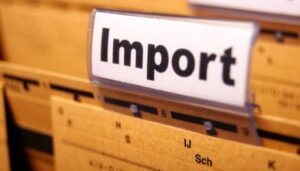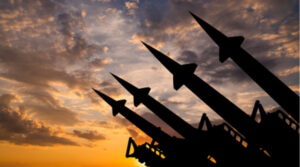
Germany’s GDP remained unchanged in the third quarter of 2025 compared to the previous three months, according to final data from the Federal Statistical Office.
This coincided with both the previously announced data and the consensus forecast of analysts surveyed by Trading Economics.
Germany’s economy grew by 0.3% year-on-year in the third quarter. This figure was also unchanged and in line with experts’ expectations.
“Weak exports had a dampening effect on economic activity in the third quarter, while capital expenditure increased slightly,” said Destatis President Ruth Brand.
Government spending in July-September remained unchanged from the previous three months, while capital expenditure rose by 0.3%. At the same time, consumer spending fell by 0.3%, the first decline in seven quarters.
Exports of goods and services fell by 0.7%, while imports remained unchanged.
In the second quarter, Germany’s GDP fell by 0.2% q/q and rose by 0.3% y/y.
Earlier, the Experts Club information and analytical center released a video analysis of global economic trends and the outlook for the world’s major economies until the end of 2025 – https://youtu.be/kQsH3lUvMKo?si=LnQWU3r2Kd5HesPh
Source: http://relocation.com.ua/germanys-gdp-remained-unchanged-in-the-third-quarter/

The volume of passenger car imports to Ukraine, including cargo-passenger vans and racing cars (UKT ZED code 8703), in January-October 2025 amounted to almost $4.82 billion, which is 32.6% more than in the same period of 2024 ($3.63 billion) and 10% more than in the whole of 2024.
According to statistics released by the State Customs Service of Ukraine, the growth rate of passenger car imports has thus accelerated, reaching 27.4% in the first nine months of the year compared to the same period in 2024.
In October this year, passenger cars worth $647.8 million were imported into Ukraine, which is 81% more than in October last year.
The top three suppliers of cars to Ukraine in January-October this year were Germany, the US, and China, while last year they were the US, Germany, and Japan. In particular, car deliveries from Germany increased by 52% to $841.3 million, and their share in the structure of car imports was 17.45% compared to 15.23% a year earlier.
Cars worth $839.7 million (25.4% more) were imported from the US to Ukraine, and $663 million (13.8% of passenger car imports) from China. Last year, imports from Japan, which was among the top three leaders, amounted to almost $430 million (11.8%).
Imports of passenger cars from other countries during the period amounted to $2.476 billion, compared to $1.981 billion in January-October 2024.
At the same time, in the first 10 months of this year, Ukraine exported only $7.17 million worth of such vehicles, in particular to the UAE, Canada, and the US, while a year ago, during the same period, the country supplied $9.33 million worth of such vehicles to foreign markets, mainly to Canada, Germany, and the US.
According to the State Customs Service, in the overall structure of imports of goods to Ukraine in January-October 2025, the share of passenger cars was 7.1% (6.3% last year), and in the structure of exports – 0.02% (0.03%).
As reported, in 2024, passenger cars worth $4.385 billion were imported into Ukraine, which is 8% more than a year earlier, and $10.1 million worth were exported (2.7 times less).

The volume of tractor imports to Ukraine in January-October 2025 amounted to $703.83 million, which is 6.6% more than in the same period of 2024 ($660.51 million), according to statistics from the State Customs Service.
According to the published statistics, tractors were mainly imported from the US (22% of total imports of this equipment, or $154 million), China (17.2% or $121.1 million), and Germany (16.4% or $115.6 million), while last year Germany was the leader ($101.5 million), China was second ($91.6 million), and the US was third ($86.9 million).
At the same time, imports from other countries in January-October decreased by 17.7% to $313.1 million.
In October this year, tractor imports to Ukraine increased by 9.1% compared to October 2024, to $73.8 million, which is also slightly higher than in September 2025.
Since the beginning of this year, as reported, tractor imports to Ukraine have shown negative dynamics: in January, they were one-third lower than in January 2024, but by the end of the first half of the year, the figures were almost equal to last year’s.
According to statistics from the State Customs Service,
this year, tractors worth $5.1 million were exported in January-October, mainly to Romania (25%), Belgium, and Germany, while last year during this period, exports amounted to $4.6 million, mainly to Moldova (25.6%), the Czech Republic, and Kazakhstan.
As reported, tractor imports to Ukraine in 2024 amounted to almost $784 million, 5.6% less than a year earlier, while exports amounted to $5.44 million compared to $5.74 million.

According to the results of January-October 2025, Poland, Turkey, and Germany remain Ukraine’s largest export destinations. The volume of supplies to Poland amounted to $4.2 billion, to Turkey – $2.2 billion, to Germany – $2.0 billion, according to the State Customs Service.
Food products lead the export structure with $18.2 billion, metals and metal products with $3.9 billion, and machinery, equipment, and transport with $3.1 billion. UAH 950.7 million was paid to the budget for the clearance of goods subject to export duties.
According to the State Customs Service, total exports for 10 months decreased by 4.05% to $33.2 billion.

Imports of goods to Ukraine in January-October 2025 reached $67.8 billion, which is 18.1% more than a year earlier, according to the State Customs Service. The largest countries of origin for imports were China with $15.1 billion,
Poland with $6.4 billion, and Germany with $5.4 billion.
Taxable imports amounted to $51.8 billion, or 76% of the total volume. The tax burden per 1 kg of taxable imports was $0.52/kg.
In terms of commodity structure, 68% was accounted for by machinery, equipment, and transport—$27 billion (customs payments—168 billion UAH, 29%); chemical industry products—$10.4 billion (81.1 billion UAH, 14%); fuel and energy products – $8.5 billion (UAH 167.9 billion, 29%).
Source: https://expertsclub.eu/import-v-ukrayinu-zris-na-18-lidyruyut-kytaj-polshha-nimechchyna/

Ukraine will open offices in Berlin and Copenhagen this year to sell arms for export, Ukrainian President Volodymyr Zelenskyy has announced.
“We are opening two export capitals. You know that this is co-production and export, which we talked about, of weapons that we can afford to sell in order to have additional money for our domestic production of scarce items, for which we do not have enough money,” Zelensky said at a briefing on Monday.
According to the president, the opening of the first two representative offices was decided not at the level of companies that will be involved in co-production, but at the level of states.
“The first two capitals are our representative offices, Berlin and Copenhagen. This will happen this year,” the president added.